Twenty-six point two miles is the same distance everywhere—but it’s never the same race. In the United States, marathons are living, breathing stories: citywide block parties, quiet pilgrimages, wind-tunnel tests, and postcard tours rolled into one. Choosing the right one isn’t just about a date on your calendar: It’s about choosing the kind of journey you want to remember.
Why should you care? Because your goal dictates your course. If you’re hunting a qualifier for the Boston Marathon, you’ll need to scrupulously consider factors like flat miles, cooler temperatures, and ideal logistics. If you’re more inclined toward a fruitful travel experience, you may be more interested in ocean views, mountain skylines, or fall foliage. The “best” marathon is the one that matches your why, your training, and your threshold for adventure.
Marathons also shape the places that host them. They raise millions for causes, knit neighborhoods together, and veritably transform ordinary streets into corridors of community. Across the US, you can encounter desert sunrises, coastal gloom, or biting Autumn mornings in the Northeast.
In this article, we’ll explore the best marathons in the United States, ones that cater toward adventure, competitiveness, or even a proclivity toward scenery. Whether you’re lacing up for your first finish line or your next breakthrough, the right marathon is out there.
I. World Marathon Majors
Boston Marathon – Best Marathons

Location:Boston, MA
Qualification: Qualifying times for the Boston Marathon vary on the basis of age and gender. Standards can fluctuate year-to-year. It is significant to note that a permissible qualifying time must be achieved at a certified full marathon course. Times from more artificial environments, like indoor environments, or virtual and unofficial races, will not be accepted. Moreover, you must achieve a qualifying time within a qualifying window, which usually is inclusive of times achieved within a year before the race, itself.
History: The Boston Marathon is the world’s oldest annual marathon, with its inaugural race held in 1897. Inspired by the first modern Olympic Games in 1896, the race was created by members of the Boston Athletic Association and originally covered a distance of 24.5 miles. It has since evolved significantly, with the course length standardized to 26.2 miles in 1924 to match the Olympic distance. Over the decades, the race has broken down barriers, officially welcoming women in 1972 after notable unofficial runs by pioneers like Roberta “Bobbi” Gibb and Kathrine Switzer in the mid-1960s. The event also became the first major marathon to establish a wheelchair division in 1975. The marathon’s history is deeply intertwined with Patriots’ Day, a Massachusetts holiday on which it’s traditionally held, and has come to symbolize resilience, particularly after the 2013 bombing.
Chicago Marathon
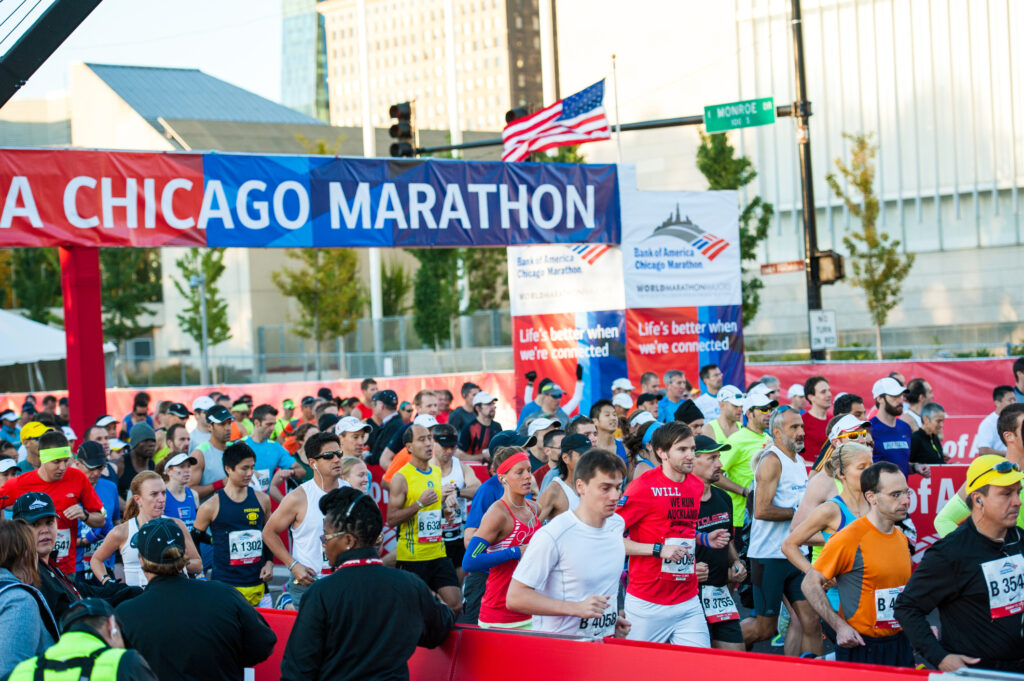
Location: Chicago, IL
Qualification: Qualifying times must be from a full marathon run on a course certified by USA Track & Field (USATF), World Athletics, or a similar governing body. Similar to the Boston Marathon, the Chicago Marathon has become increasingly popular, and specific standards are established according to one’s gender and age.
History: The modern Bank of America Chicago Marathon began in 1977, but its roots trace back to an earlier series of races in the city that ran from 1905 into the 1920s. The contemporary event, originally known as the Mayor Daley Marathon, was founded by a group of running enthusiasts and quickly grew from 4,200 participants in its inaugural year to a massive field of over 45,000 runners today, making it one of the largest marathons in the world. The race’s reputation was solidified in the 1980s with the introduction of prize money, which began attracting elite international athletes, and its flat, fast course has become a popular location for world-record attempts.
New York City Marathon – Best Marathons

Location: New York City, New York
Qualification: Unlike the Boston Marathon, the New York City Marathon has multiple primary routes to entry. For a guaranteed spot in the New York City Marathon, qualifying times must be run either in a prior NYRR-sanctioned race or a limited number of non-NYRR races, with the fastest applicants prioritized for non-NYRR races. A popular option for local runners is the “9+1 Program,” applicable to New York Road Runners (NYYR) who complete nine qualifying NYRR races and volunteer at one NYRR event during the previous calendar year. An additional option is the “15 + Marathons” subset of runners, individuals who have finished the NYC Marathon 15 or more times. A final method for guaranteed entry is through one of the various charity programs affiliated with the New York City Marathon, which requires a substantial fundraising commitment.
History: The New York City Marathon, a cornerstone of the running world, has a history as dynamic as the city itself. Its humble beginnings trace back to 1970, when a small group of 127 runners competed in a multi-loop race entirely within Central Park. The race was a small-scale, community event until 1976, when it was expanded to a five-borough route to celebrate the United States Bicentennial. This new course, with its iconic start on the Verrazzano-Narrows Bridge and journey through diverse neighborhoods, transformed the event into a massive public spectacle. Over the years, the marathon has been a stage for historic moments, from the dominance of legendary runners like Grete Waitz and Bill Rodgers to the emotional “Wrong Way Silva” victory in 1994.
II. Beginner’s Marathons
Marine’s Marathon
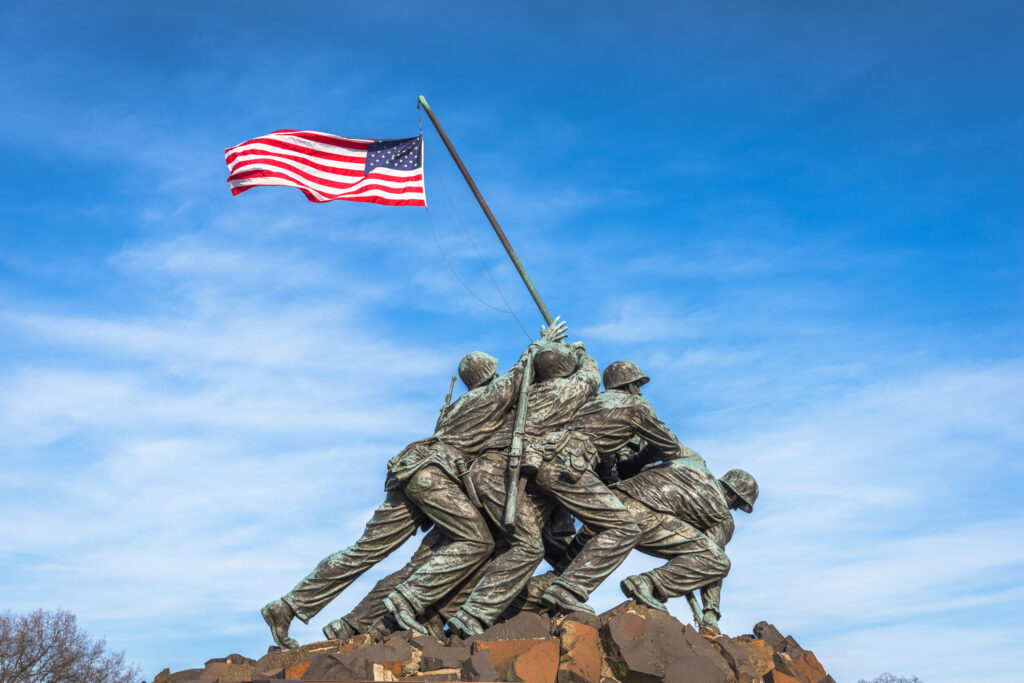
Location: Washington, D.C.
Qualification: The Marine Corps Marathon, often called “The People’s Marathon,” distinguishes itself from many other major marathons by not having a qualifying time for general entry. This makes the race open to runners of all experience levels. Due to high demand, spots are typically allocated through a lottery system, which opens in the spring. However, there are alternative ways to gain a guaranteed entry, such as joining the Marine Corps Marathon Runners Club, which provides priority registration.
History: The Marine Corps Marathon was founded in 1976 by Colonel James L. Fowler with a dual mission: to promote physical fitness and to foster goodwill between the military and civilian communities in the post-Vietnam War era. Unlike many other major marathons that began as purely athletic competitions, the Marine Corps Marathon has always been a way to showcase the discipline and organizational skills of the United States Marine Corps, serving as a powerful public relations tool and a recruiting opportunity. Its inaugural race featured just over 1,100 participants and was a simple affair held entirely in Northern Virginia. The course was soon modified to include a scenic tour of Washington, D.C., and its national monuments, which has become a hallmark of the race.
Eugene Marathon – Best Marathons

Location: Eugene, Oregon
Qualification: The Eugene Marathon operates on a standard registration basis, open to anyone who signs up before the field is full. This makes it a popular destination for runners seeking to achieve a qualifying time for the Boston Marathon, as it is conspicuously flat, fast, and scenic. Notably, the Eugene Marathon also does have an elite athlete program with specific time standards for runners seeking a complimentary or discounted race entry, as well as special perks like personal bottle drops on the course.
History: The Eugene Marathon was founded in 2007 as a modern revival of a major marathon in a city known as “TrackTown USA.” Eugene’s running heritage dates back decades, with a history of producing legendary athletes like Steve Prefontaine and hosting Olympic Trials. The marathon’s founders sought to build on this legacy, with the event’s tagline “Run in the Footsteps of Legends.” The course is designed to reflect this history, winding through the city and along the Willamette River on roads and trails used by generations of elite runners. A key feature of the race is its finish on the iconic track inside Hayward Field at the University of Oregon, a venue that has hosted countless historic moments in the sport.
Walt Disney World Marathon
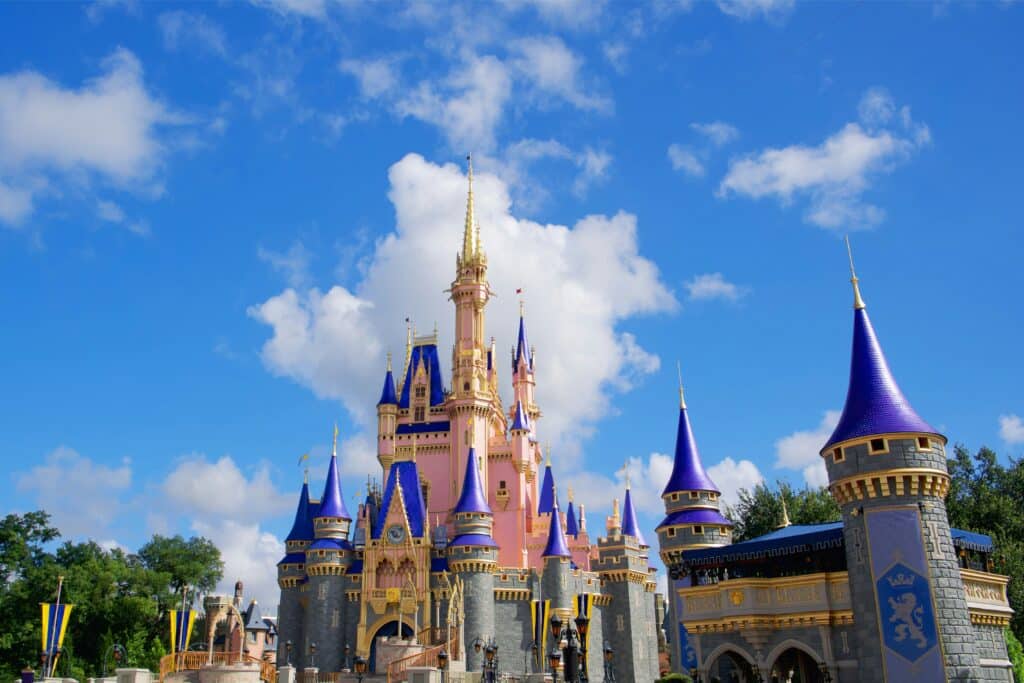
Location: Orlando, FL
Qualification: The main challenge for runners interested in the Walt Disney Marathon is simply securing a spot, as the race typically sells out very quickly after registration opens. While a qualifying time is not needed to register, runners who anticipate finishing the marathon in five hours or less are encouraged to submit a “proof of time” from a certified race to be placed in a faster starting corral, which can improve the running experience by avoiding crowded sections of the course.
History: The Walt Disney World Marathon began in 1994 as a single race and has since transformed into a major, multi-day endurance event. Founded as the “Disney Endurance Series,” it was the first road race hosted at the resort and was designed to combine the magic of Disney with the growing popularity of distance running. The inaugural race in January 1994 had just over 5,500 runners who ran through three of the theme parks, a route that would evolve over the years to include all four parks and other resort areas. The event’s appeal quickly grew with the introduction of new races, including a half marathon, and multi-race challenges like the Goofy and Dopey Challenges, which award extra medals for completing multiple races over the weekend.
III. Scenic Marathons
Big Sur Marathon – Best Marathons
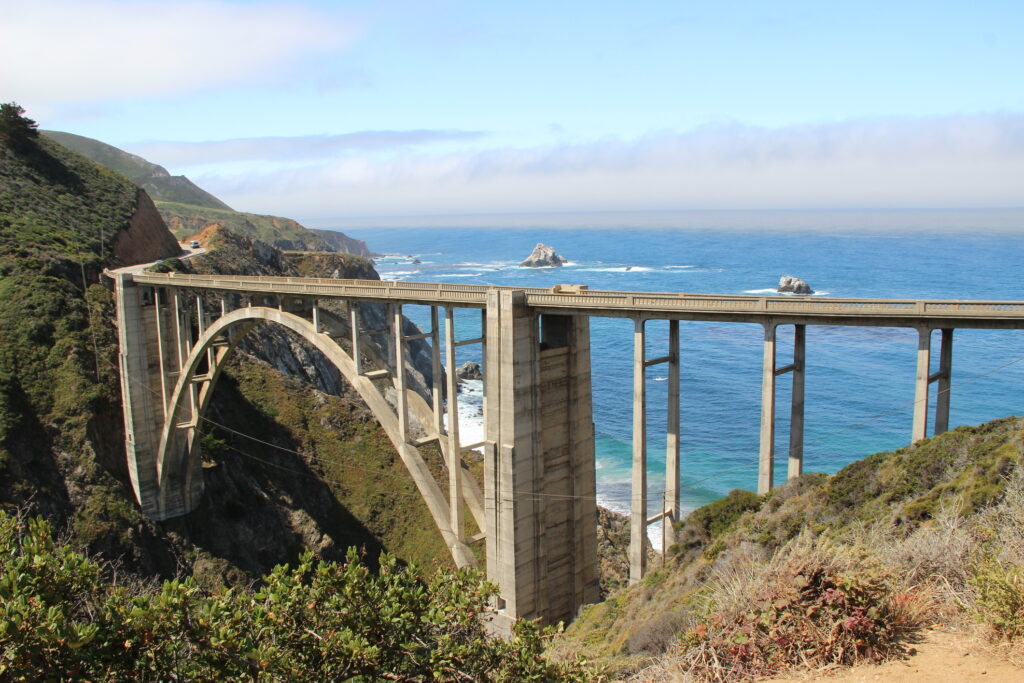
Location: Big Sur, CA
Qualification: The primary entry method for the Big Sur Marathon is a random drawing or lottery, which is highly competitive due to the limited field size. However, the race does have a strict 6-hour time limit, a non-negotiable requirement for all marathon participants, which is a key part of the race’s permit to use Highway 1. Runners who fall behind a 13:45 per mile pace are at risk of being removed from the course at specific checkpoints.
History: The Big Sur International Marathon was established in 1986 by a group of local runners and business leaders who wanted to showcase the breathtaking beauty of the Central California coastline. Unlike many marathons founded to attract elite competition, Big Sur was conceived as a unique experience for recreational runners, and its founders deliberately chose to limit the field size to preserve the intimate and non-commercial feel of the event. The course was designed to take runners along a rugged and dramatic stretch of Highway 1, including the iconic climb up Hurricane Point, which has become a defining feature of the race.
Honolulu Marathon
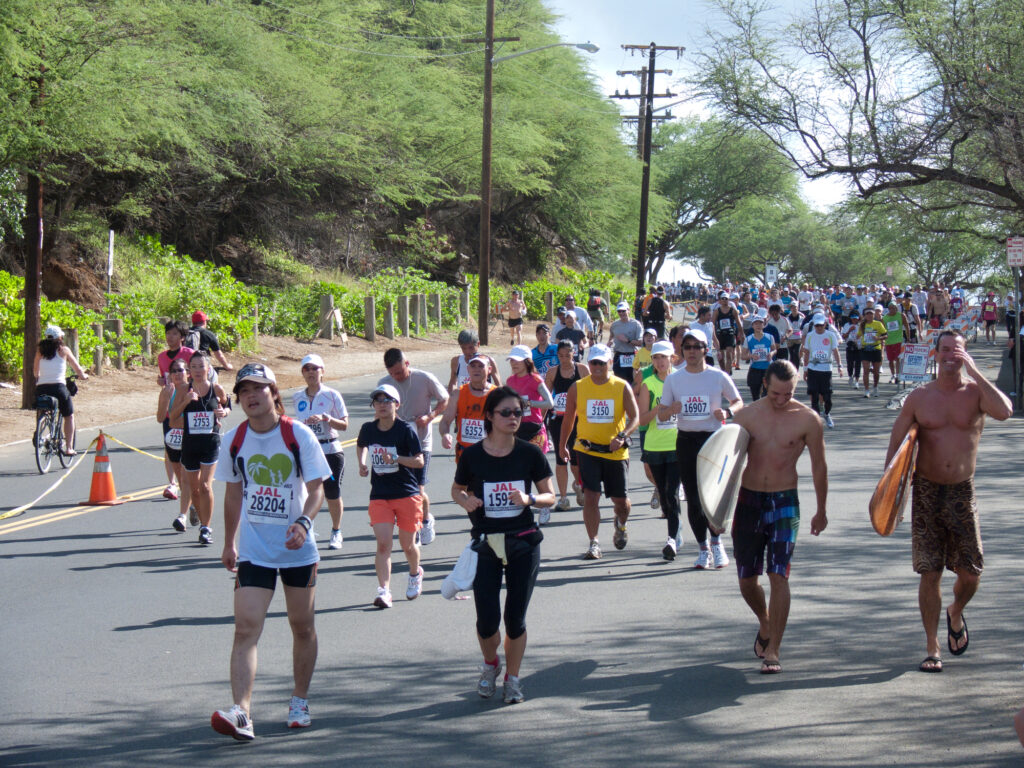
Location: Honolulu, HI
Qualification: The Honolulu Marathon stands out among major marathons for its exceptional inclusivity, as it has no qualifying time and no time limit for runners to complete the race. This policy means that anyone, regardless of their running or walking pace, can sign up and participate. Unlike many popular races that use a lottery system, the Honolulu Marathon offers general entry on a first-come, first-served basis through a straightforward registration process.
History: The Honolulu Marathon was established in 1973 by cardiologist Dr. Jack Scaff, who aimed to promote long-distance running as a healthy activity, a belief that was considered radical at the time. Inspired by the post-1972 Olympic running boom and the city’s desire to become a major destination, the marathon was founded with a unique “Aloha Spirit” ethos. This approach is reflected in its famous policy of having no qualifying time and no time limit, allowing people of all fitness levels to participate. Over its history, the Hawaiian race has grown from a small local event with 167 runners to become one of the largest marathons in the United States, attracting tens of thousands of participants each year.

